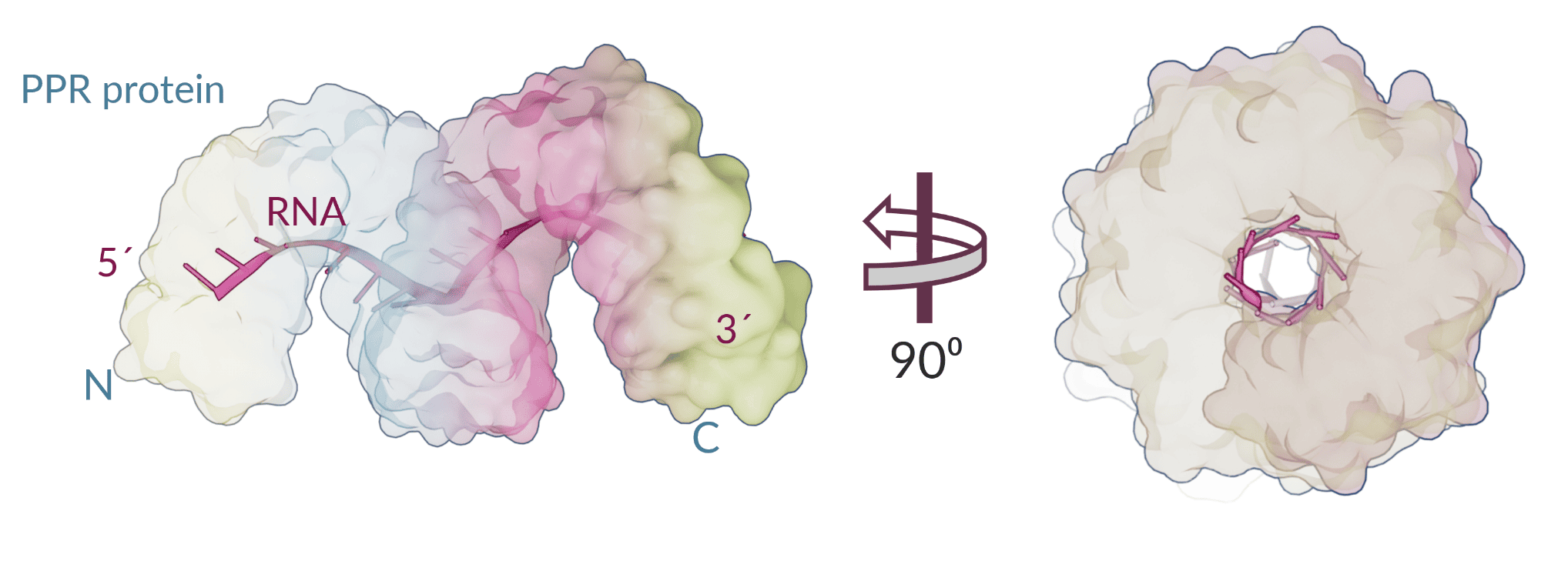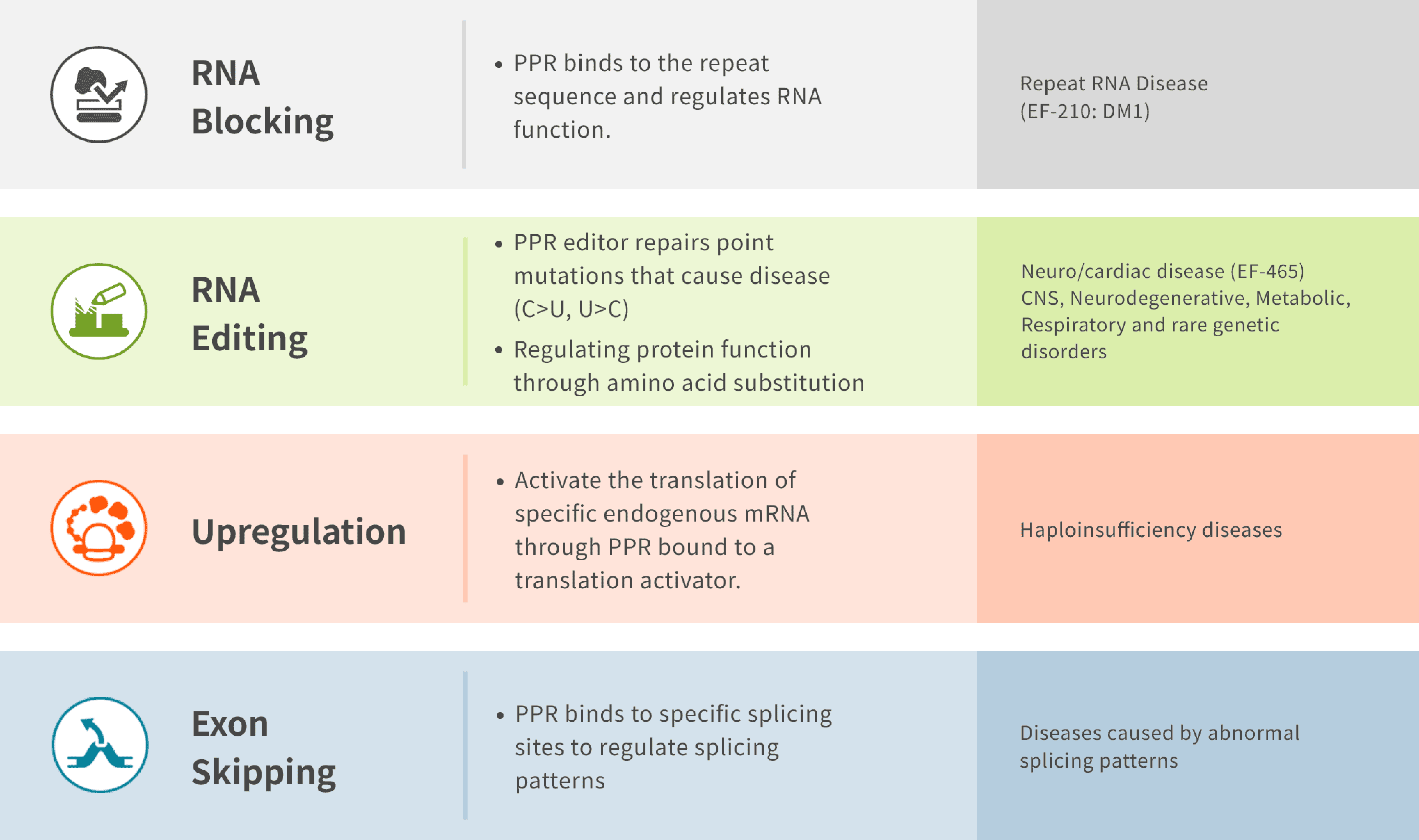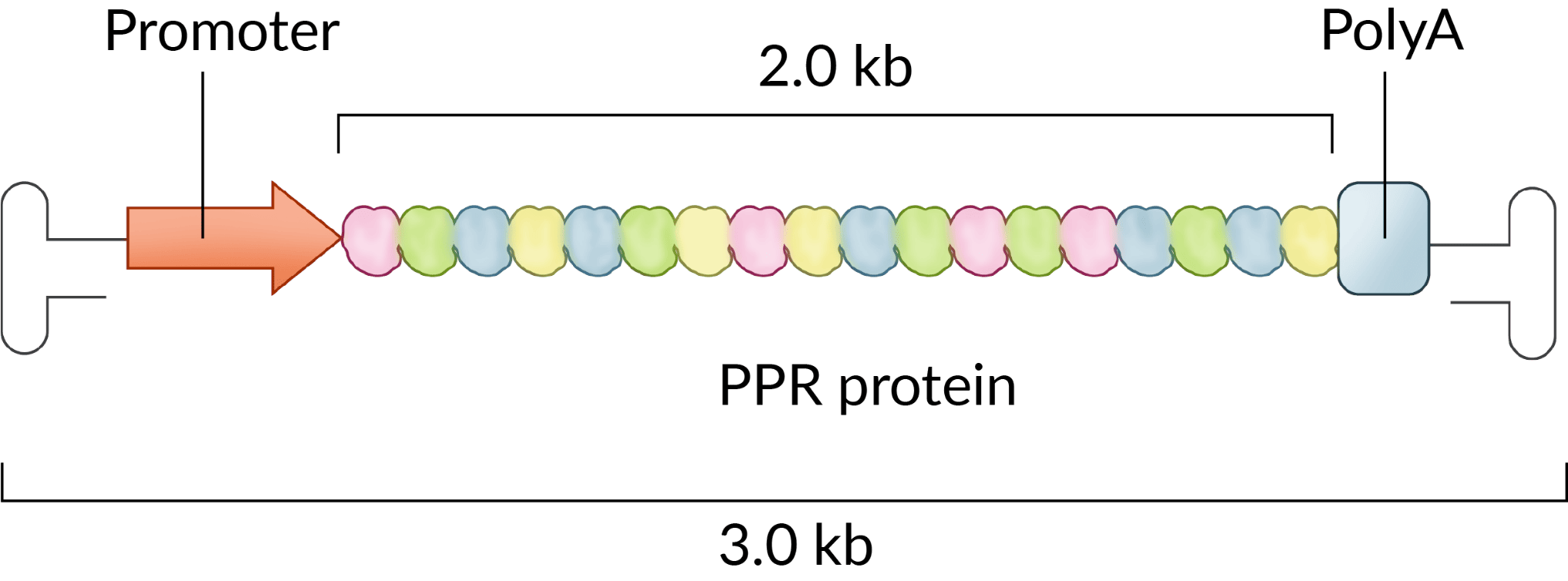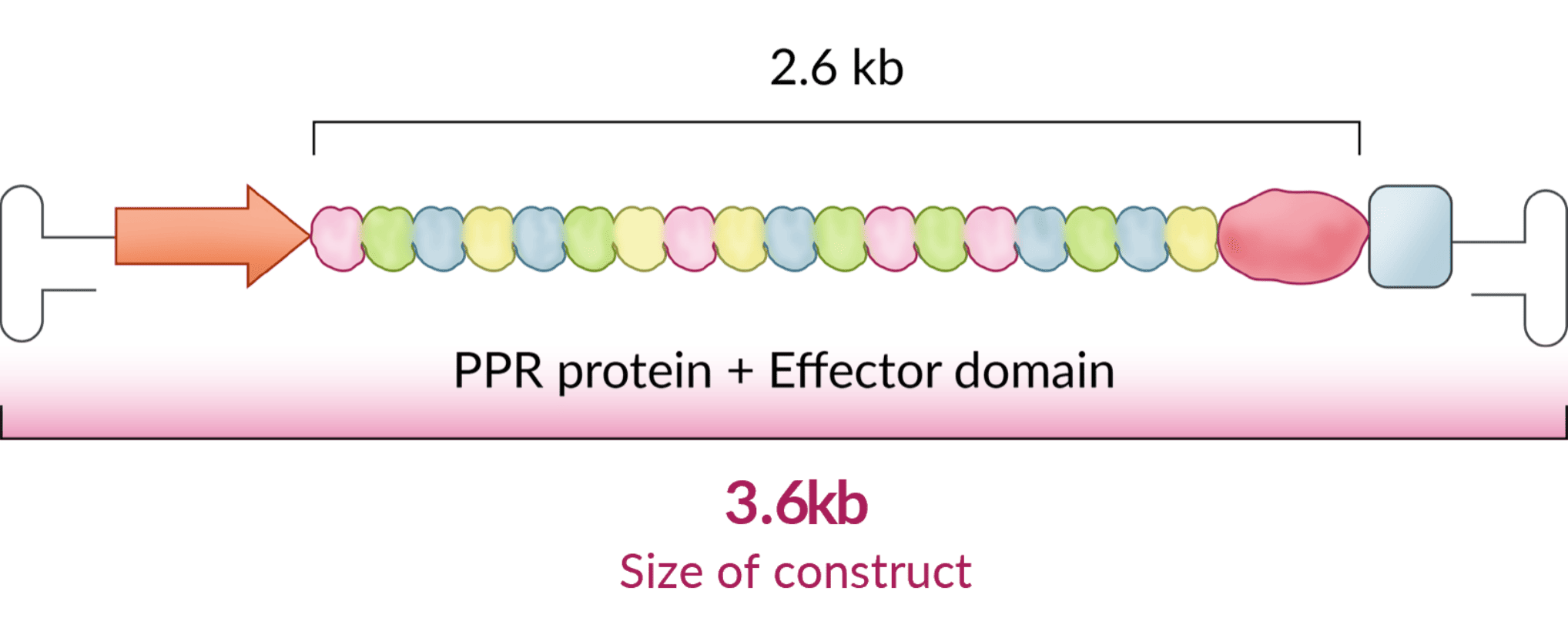
![]()
DESIGNABLE
PPR proteins can be engineered to bind RNA in a sequence-specific manner.
The discovery of a clear correspondence between amino acid residues in PPR motifs and specific RNA bases has enabled the rational design of PPR proteins that can recognize defined RNA sequences. By assembling multiple PPR motifs in tandem, proteins can be tailored to selectively bind a desired RNA target.
Crystal structure of our PPR protein and target RNA

How PPR proteins Recognize RNA


PCT/JP2012/077274 PMID:23472078
PPR proteins consist of a continuous array of structural units called PPR motifs, each comprising 35 amino acid residues. Each PPR motif recognizes and binds to a single nucleotide in the target RNA. The identity of the bound base is determined by a specific combination of three amino acid residues within the motif. By assembling PPR motifs in tandem according to the nucleotide sequence of a target RNA, it is possible to design RNA-binding proteins with programmable sequence specificity.
![]()
VERSATILE
Effector domain allows versatile RNA control
By swapping the effector domain fused to the PPR scaffold, a variety of RNA-related functions can be controlled in addition to base editing.
Additionally, by adding intracellular localization signals to PPR proteins, RNA targeting can be directed not only to the cytoplasm, but also to the nucleus and mitochondria.

Various MOA and targetable RNA-related diseases

PPR Editor–Proprietary PPR-based RNA editing
PPR Editor, a fusion of PPR protein and our proprietary DYW enzyme domain, conducts C-to-U base editing
precisely four bases downstream of the last base of RNA Sequence recognized by PPR protein.
Unlike gRNA/oligo-based RNA rditing, PPR editor relaize RNA targeting and base editing within a single proteIn unit.PPR editor can target various RNA sequences and has demonstrated both hight editing efficiency for the targeted and low off-target editing in a in vivo study.
Basic profile of PPR editor

![]()
DELIVERABLE
Fits into AAV size constraints (< 4kb)
The PPR platform enables the creation of single-chain proteins that can both bind to RNA and exert regulatory functions.
When delivered as a gene, the compact coding sequence of the PPR protein is short enough to be packaged into adeno-associated virus (AAV) vectors and other drug delivery systems (DDS).
The size of payload expressing PPR protein


